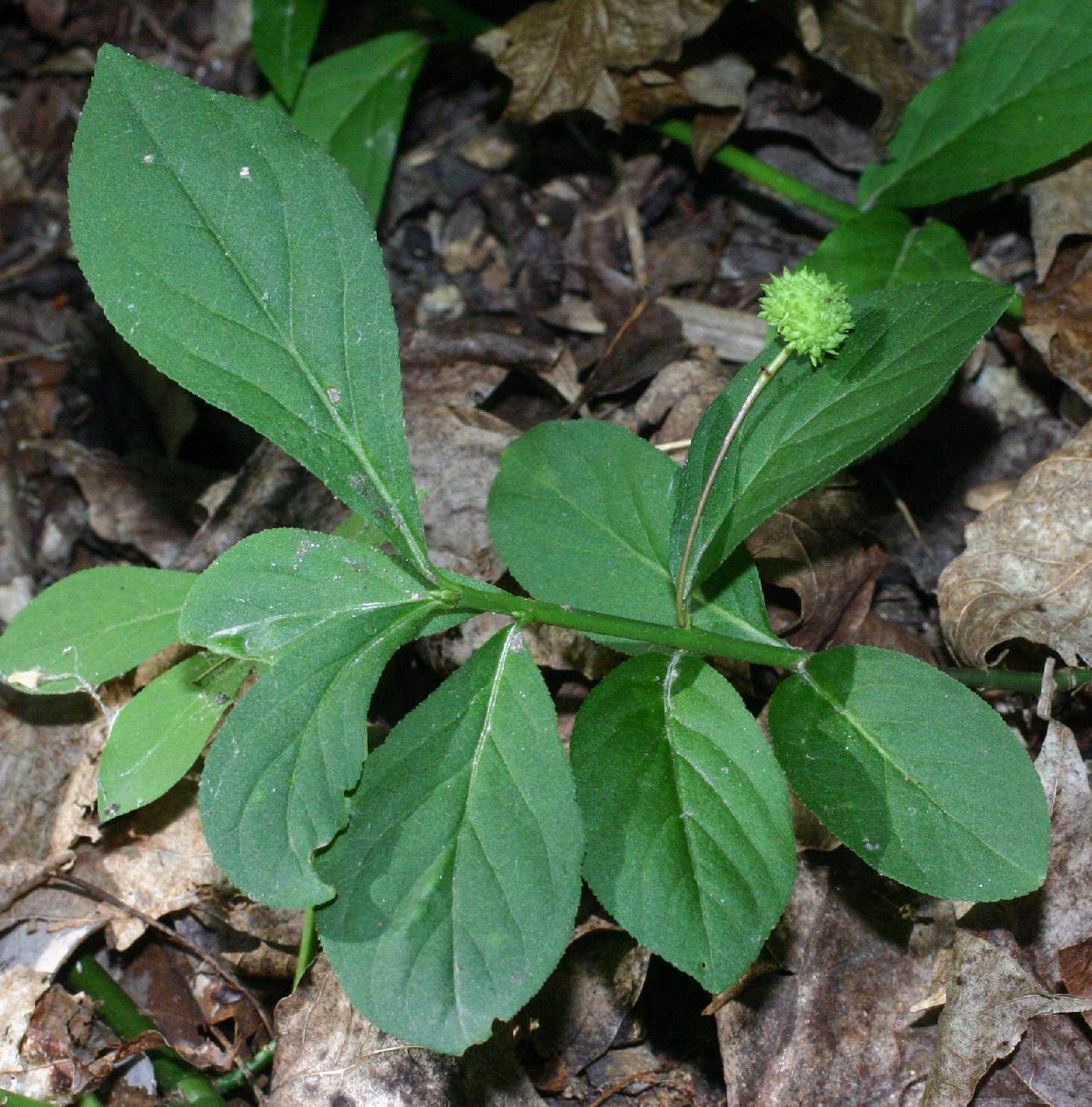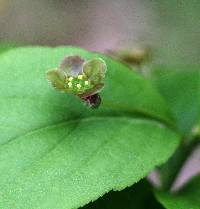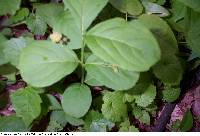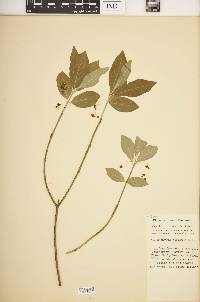Shrub less than 45 cm tall, trailing stems to 1 m long
Leaves: opposite to subopposite, very short and sometimes winged stalk, dull medium to dark green above, paler beneath. Terminal leaves are 3 - 6 cm long, 2 - 4.5 cm wide, and inversely egg-shaped, and lateral leaves are smaller, inversely egg-shaped or lance-shaped to oval. All leaves have a wedge-shaped base, a blunt to pointed tip, are toothed, and remain green into early winter.
Flowers: solitary or in clusters of two to five in leaf axils, greenish purple, 6 - 8 mm wide, five-petaled.
Fruit: a three-lobed capsule on a drooping stalk, pale orange to scarlet red, 1.5 cm wide, spherical to heart-shaped with a flattened base and a warty surface, splitting to reveal one or two seeds covered with a scarlet red coating (aril).
Twigs: green to purple, smooth, ridged or angled, with trailing stems rooting into the ground.
Form: trailing, creating a dense mat.
Similar species: Euonymus fortunei is an aggressive vine that forms a groundcover and climbs up structures and trees. It has evergreen leaves that are egg-shaped and paler along major veins, four-parted flowers, and smooth fruits.
Flowering: mid May to late June
Habitat and ecology: Locally common in rich woods and wooded dune slopes.
Occurence in the Chicago region: native
Notes: Euonymus obovata is sometimes planted as a groundcover on shaded slopes. The fruit and leaves are considered poisonous to humans, but birds eat the fruit and deer and rabbits eat the leaves and stems.
Etymology: Euonymus is the ancient Greek name for the genus. Obovata means "inverted egg-shaped," referring to the leaves.
Author: The Morton Arboretum





